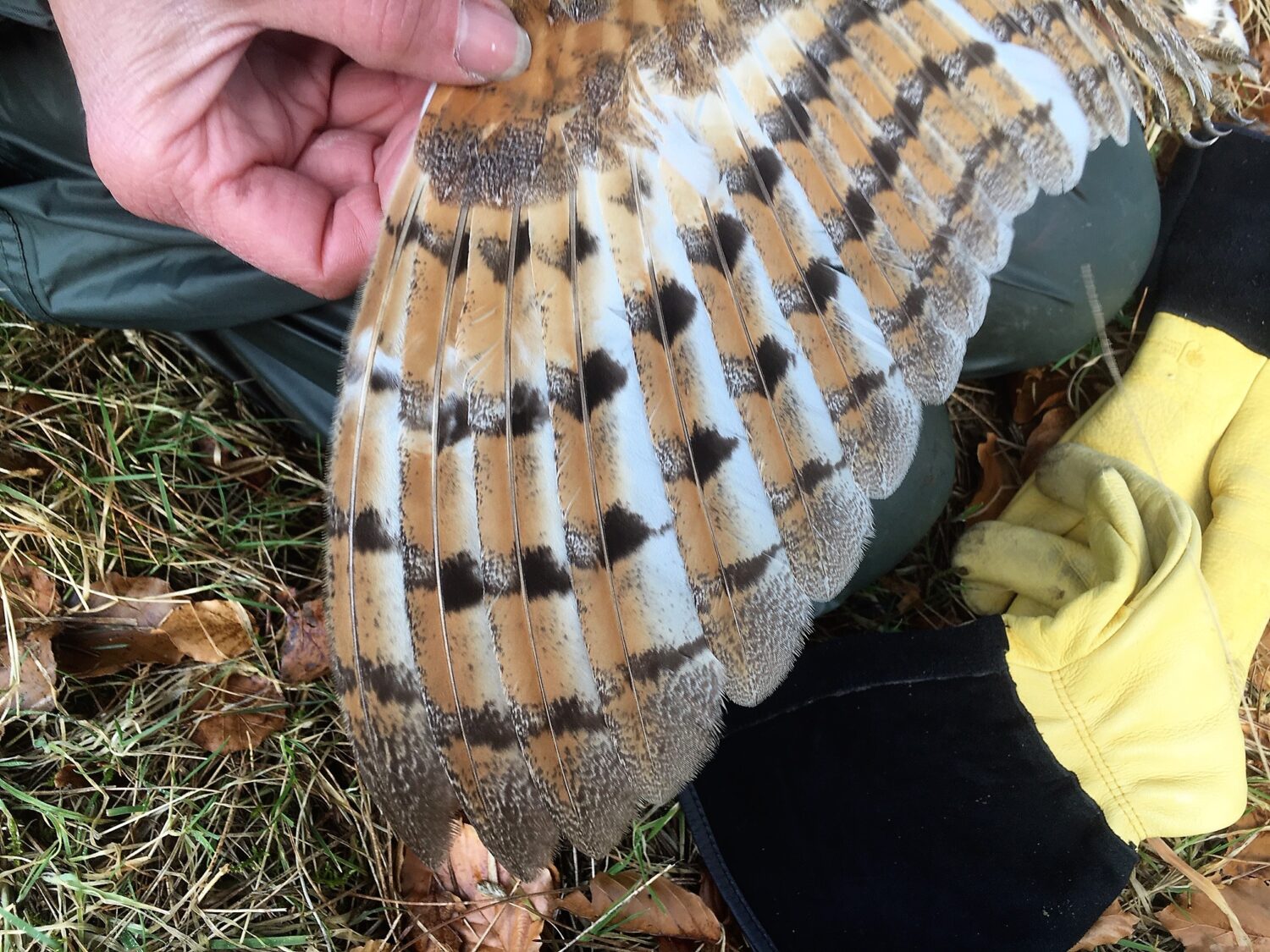Ornithologist, Phil Hanmer, shares a March update summarising bird monitoring across Northumberland throughout the month.
It’s that time of year when ringers get recovery reports from the British Trust for Ornithology; after helpful members of the public have sent in records of dead birds they have found with ring on them. This has revealed for the second month running the effect that the winter cold, followed by rain, followed by snow, has had on the local Barn Owl population. One owl, ringed in its nest in June 2020, near Whittingham was found dead near Eglingham; while another from a late second brood near Rock was found dead barely a km away. These were of course very young owls but another ringed as an adult near Wooler in 2016 was also found dead quite close to ‘home’.
However, good news can come in the form of owls encountered alive when one is not even looking for them! While undertaking checks for necessary repairs to three goldeneye duck boxes at the start of the month I came across three Barn Owls. Two had been ringed in their respective nests in 2020, one male one female; while a third was a new male bird that was probably two years old.

At the end of March, I undertake a sample check of barn owl boxes to see if birds are preparing to nest (and clean out any boxes that were missed last year). We found six pairs of owls and six individuals: that is twelve occupied sites. However, not a single egg has been laid yet and all the female birds were underweight to lay eggs; so, I think we are looking at a late and less successful breeding season than last year. However, it was gratifying to find a 9-year-old male owl south of Wooler, and an 8-year-old female living near Fallodon that we know was originally ringed in Redesdale. However, currently the oldest Barn Owl I am aware of is an unusually ‘non-spotty female’ that is 11yr’s old, residing with her mate near Boulmer.
The weather had been too unsettled to do much Mist Netting for small birds this month but I did manage to catch a few Goldfinch in traps on the 24 March. These small passerine birds are not breeding yet, despite what some of the media might tell you; I also caught a few Siskins on 15 March, stopping to eat Niger seed, before continuing to travel north. Finally, on the 31 March, we managed a mornings mist-netting at home and captured three newly arrived Chiffchaff (probably from ‘Senegambia’, in Africa); a pair of Siskins and a Blue Tit from 2019.
Looking forward to May when tits and other birds that use boxes do nest, we have managed to put up new boxes in a wood near the coast utilising a grant from Coast Care & the AONB; for which I am very grateful. Mapping and numbering all the boxes to make it much easier to monitor and record how they are used. Taking over a Nest Box scheme from someone else many years ago was quite frustrating; as we had no map and no numbers – meaning we kept discovering extra boxes and missing out others when we went around the wood for several years afterwards!
The ‘Howick Swans’ continue to entertain with no swans since New Year until the 28 March when the usually resident female (identified as ZJX by her plastic ring) was on the pool. On seeing me she headed over to ‘ask’ for food and I was able to feed her a small quantity of grain and floating duck pellets. There was no sign of ‘her mate’ or any other swans.
